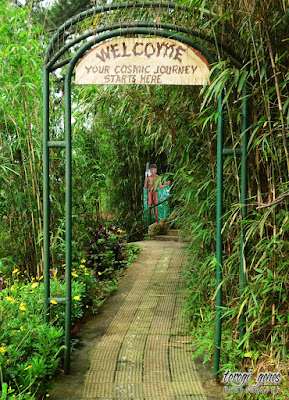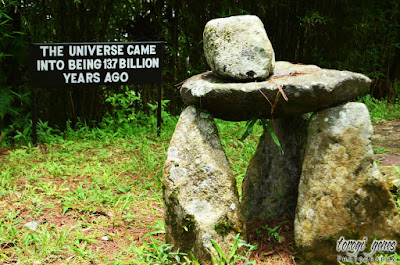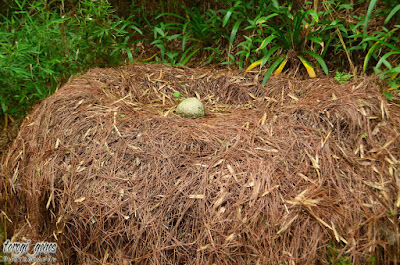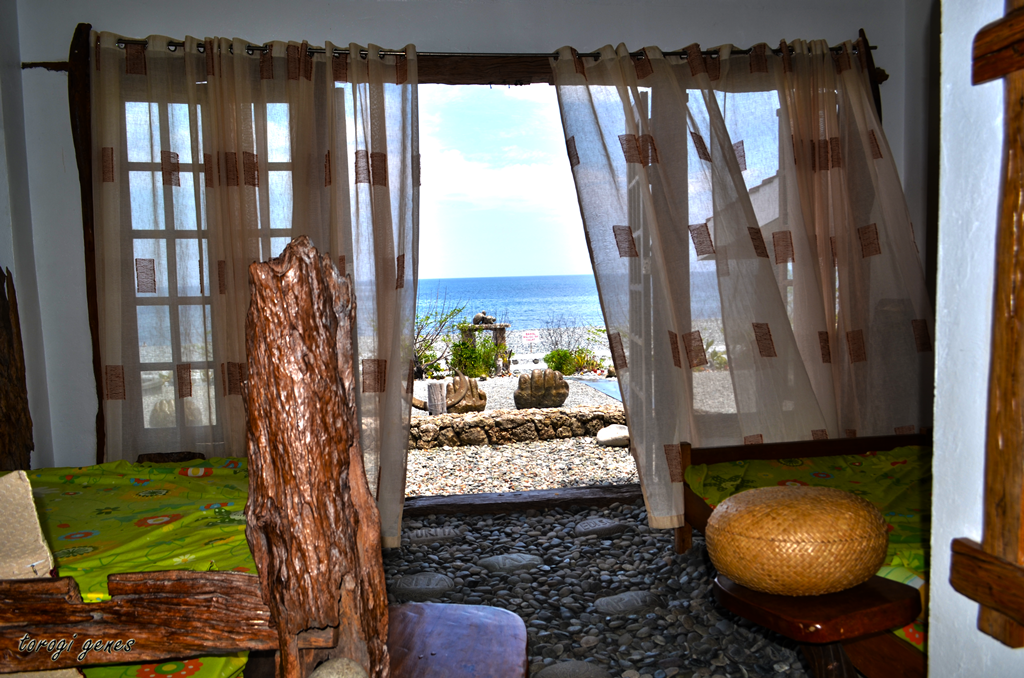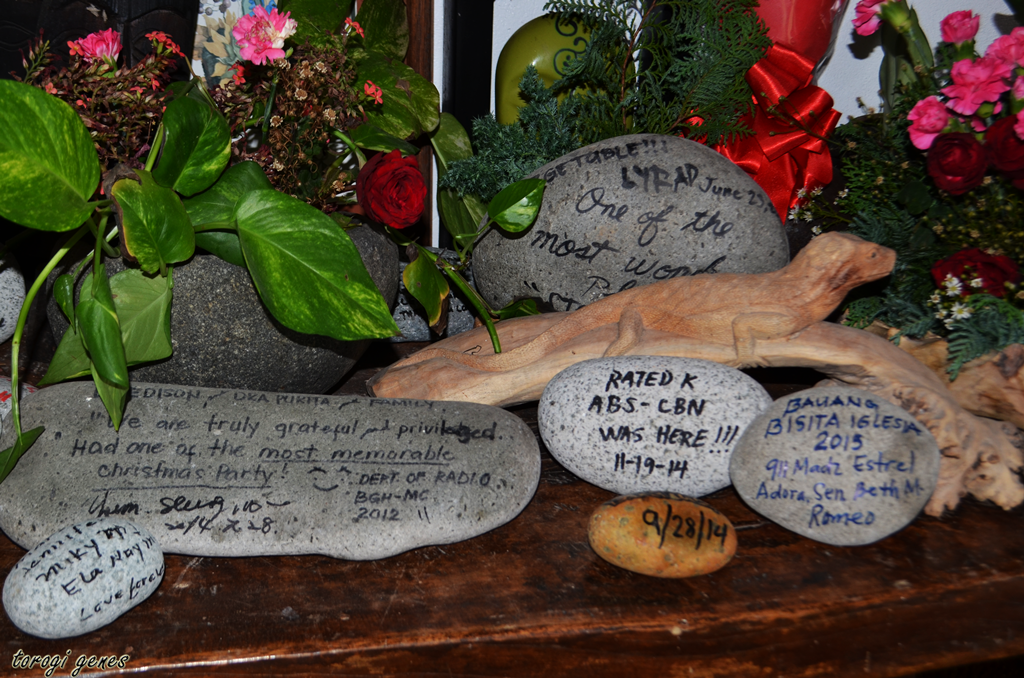MARYKNOLL ECOLOGICAL SANCTUARY
Last updated:
03 August 2016
Updated article is migrated on this link:
Location:
|
25 North Santo
Tomas Road, Campo Sioco, Baguio City, Philippines.
|
Contact Details:
|
|
Email:
mesbaguio@gmail.com;
|
|
Tel. No.: +63 74
424 5745;
|
|
CP No.: +63 915 655
5745
|
|
Registration Fee:
|
Php50.00.
|
Business Hours:
|
8:30AM to 4:30PM
(Cosmic Journey closed on Mondays)
|
How to Get There:
|
·
Take a Campo Sioco jeep at
the Igorot Park
·
Take a taxi.
·
For private car, drive to
Marcos Highway, then take a right turn to North Santo Tomas Road
|
Description
Revisiting the
Maryknoll Ecological Sanctuary had been a nostalgic moment to me as it had been
a venue to several self-awareness activities with my students when I was
working as a clinical nurse instructor. The stonehenge, the native huts, and
concrete benches had been mute witnesses to some of my students’ priceless
smiles as they recounted their best life experiences as well as tearful
accounting of their struggles and how they coped with it. It is basically the
perfect place when you want to unwind, find the inner peace in yourself, or discover the balance in your stressful life.
The Maryknoll
Ecological Sanctuary, a green museum, is located in the City of Pines just a few
minute drive away from the hustle and bustle of the central business district. The
green museum offers a two-hour Cosmic Journey among its several programs. The
Cosmic Journey walks you to 14 stations depicting natural history along its
easy trail.
Following the trail
gives you a serene feeling that “challenges us to reassess our role and
relationship with the Universe, and to refashion our way of life in conformity
with nature” (Cosmic Journey, n.d.).
This had been the biggest factor why this venue is good for self-awareness
activities.
Reminders:
- Follow the trail as indicated by the map given by the security guard.
- Do not pick flowers.
- Do not vandalize any of the art forms along the trail.
- Be guided by the Leave No Trace mantra.
Gallery
After securing a
ticket, the security guard will direct you to the start of the journey.
Follow the stairs going
up to the right, the left merges with the end of the journey.
You will not be lost
as you will be guided by arrows, rails, and caricatures along the trail.
One of the ruins
during the 1990s earthquake.
A good place to sit,
relax, or even meditate. However, there are even better places along the trail.
Obviously, another
building ruin.
The Hermitage near the ruins.
The first station.
“The universe came into being 13.7 billion years ago.”
Near the first
station is a bell inscribed with “We are
the Earth, the people, plants and animals, breath of the forest and flow of the
sea.”
“I pledge allegiance to the Earth and to the flora, fauna and human
life that it supports, one planet, indivisible, safe air, water and soil,
economic justice equal rights and peace for all.”
Unfortunately, the
concrete chairs arranged in a circular manner is located near a private
building. I remember sitting and talking with my students before on those
concrete chairs. I just cannot reconcile with my memory if the building was
there before.
Another station.
“Planet Earth emerges 5 billion years ago.”
A depiction of the
Stonehenge is the center of the second station.
One of the
stonehenges. Don’t climb it just to have a selfie.
This is also located
in the Stonehenge area serving as a gate or entry way.
Another place for
chitchat though could only accommodate a few.
Another station.
“The oceans are the birthplace for life 3 ½ years ago. “
Adorned with shells,
the min-pool at the center gives connection to the station. I remember burning
papers inscribed with my students’ bitter memories here, a symbolic act of
letting the bitterness of those memories go as we go on in our life.
The sanctuary is a
haven covered with pine trees and Chinese bamboo. During my revisit, the
bamboos and grasses are abundant awaiting for pruning and mowing.
The side rails guides
you to the next station. You might as well enjoy the plants along the way.
Another station.
“Dinosaurs on the scene 235 million years ago.”
Unfortunately, the
art depiction on this station is on maintenance during my revisit. Anyway, it
shows dinosaur eggs and a hatchling.
Another station.
“The mammals arrive 220 million years ago.”
Well, though we are mammals humans are not
yet here, I think.
Another station.
“The birds take flight 150 years ago.”
A nest made out of
pine needles.
Another station.
“Flowers spread on the earth 130 million years ago.”
A flower at the
center of the circular stone bench depicting the station.
Another station.
Here we are!
“The primates come forth 65 million years ago.”
Charles Darwin versus
the Bible, huh?
Another station.
“Early humans lives in caves 50,000 years ago.”
Depiction of the
Tabon cave.
A note inside the “cave.”
Yeah, yeah, that is the
exit from the cave. Don’t worry, you don’t need to crawl or slide like in real
caves.
Lo, the bridge! I
have seen a few of my extraordinarily brave students cower in this bridge.
From this vantage, you
cannot see the full stretch of the bridge because of its upward curve.
Another station.
“The village period 10,000 years ago.”
A traditional
Cordilleran village had been used to depict the flourishing of villages.
A closer look at one
of the depiction of the native huts.
It’s not typical in a
native hut but it’s an artwork I must say.
The campsite is near
the traditional village.
The campsite as seen
from a high vantage point.
A path leading to the
next station. There is a comfort room to the left of the path (not shown in photo).
Another station.
“The earth gives sweet water.”
A well depicting the
station’s theme.
Another station
“The emergence of the Earth’s religious traditions.”
A bulol depicting the
station’s theme.
At this point, there
are still few remaining station and artworks depicting each station’s theme.
However, I was already engaged in a conversation with visitors like me in the
sanctuary, thus I was not able to take images. This, I guess, is a cue that you
need to visit the sanctuary to see the remaining artworks, the gallery [no images shown], take a coffee at
Mollies Café, or you might try the other programs being offered.
REFERENCES:
Cosmic Journey. (n.d.). Retrieved July 28, 2016 from http://www.maryknollecosanctuary.org/index.php/2014-09-24-08-23-02/2014-08-22-10-55-13

